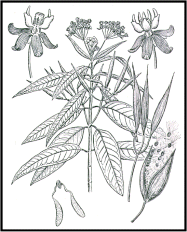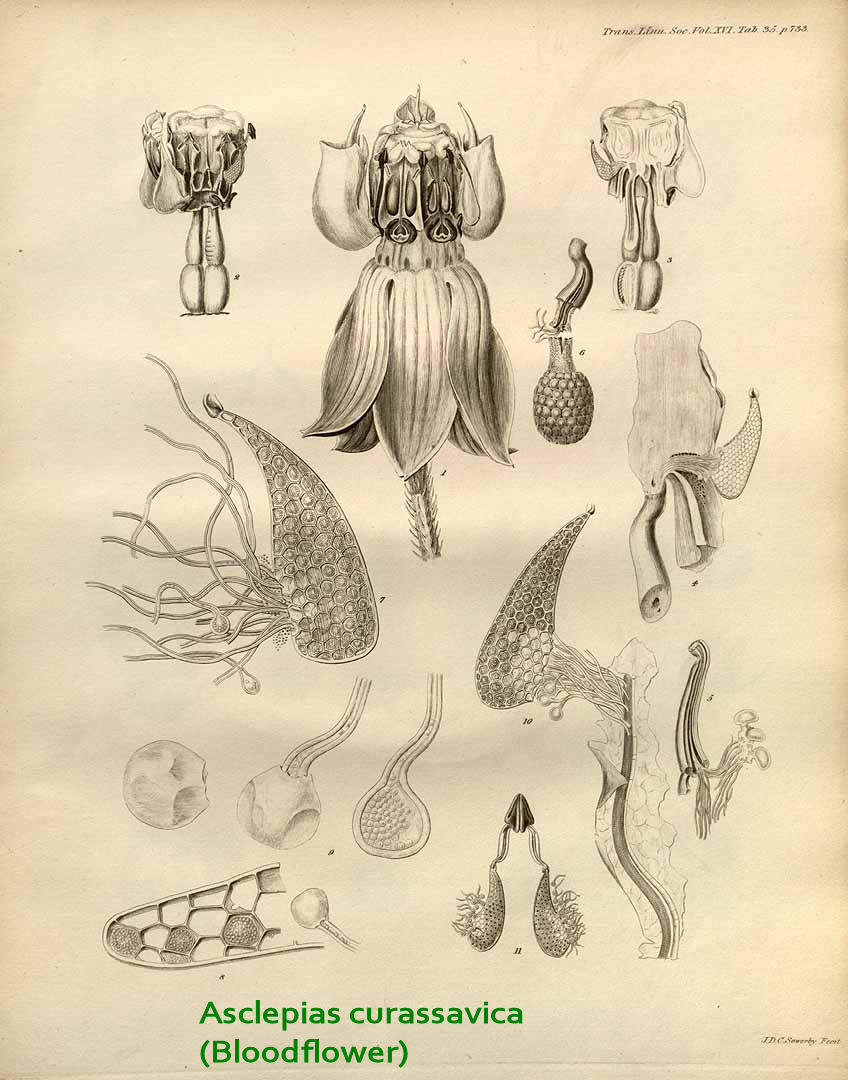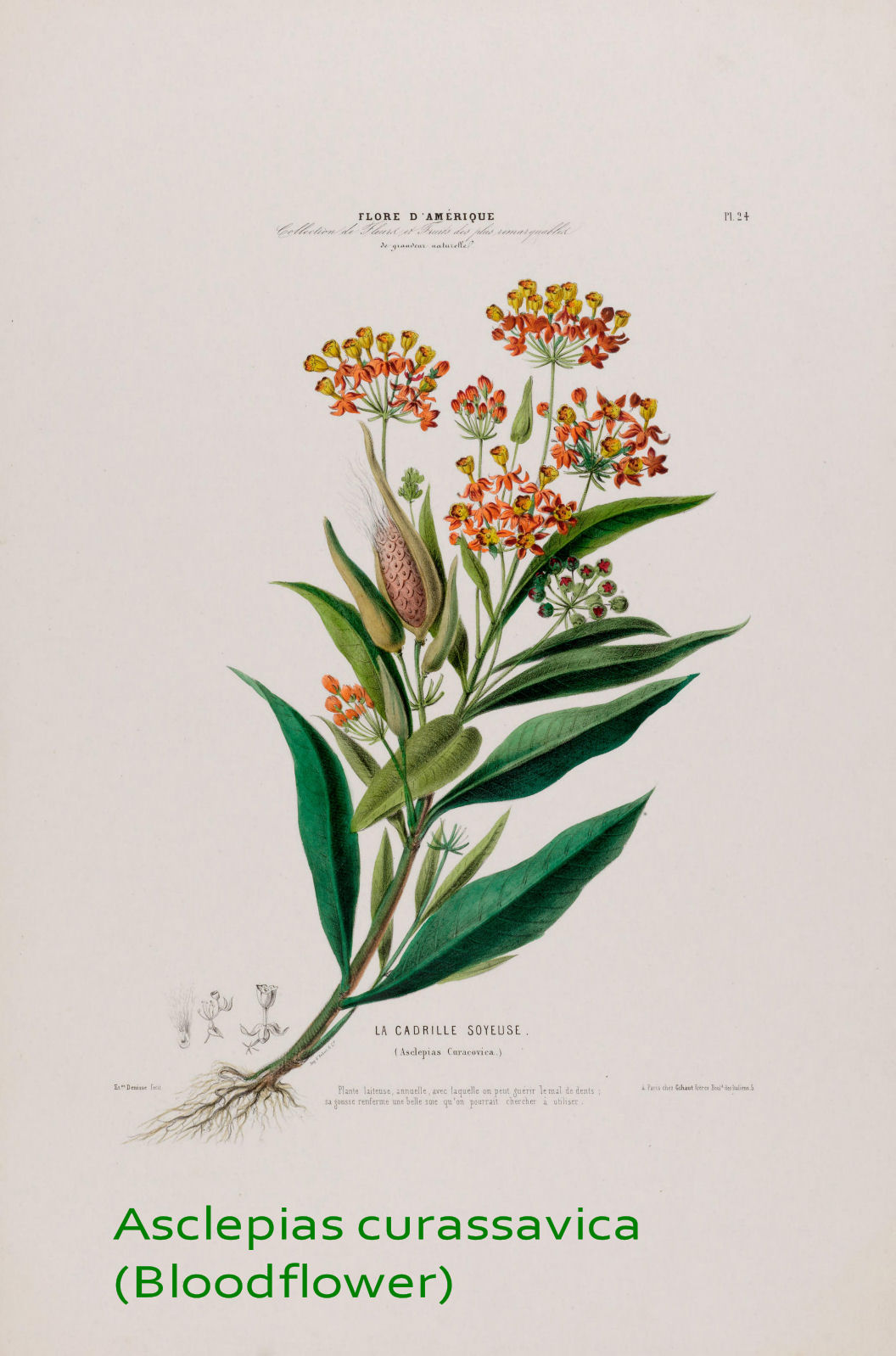 |
 |
ASCLEPIAS CURASSAVICA - BLOODFLOWER. Synonym
SynonymAsclepias nivea, Asclepias bicolor. Common name Algodoncillo, bastard ipecacuanha, bloodflower, bulak-damo, butterflyweed, cancerillo, cotton bush, false ipecac, fang cao hua, ipecacuanha, koningsbloem, madhar, mas sekar, oficail da sala, pleurisy root, redhead, scarlet milkweed, silkweed, sunset flower, tropical butterfly flower, tropical milkweed. Family Asclepiadaceae (Milkweed family). Overview This herbaceous plant is native to tropical South America and is a very common perennial roadside weed in Suriname. It has white milky poisonous sap and grows up to a height of about 4'. It has oblong-lanceolate leaves and beautiful scarlet/orange/yellow flowers; it blooms year around in the tropics and sub-tropics. The seeds, in spindle shaped pods (6 – 8 cm. long), have a crown of silky hairs and blow into the wind like miniature parachutes. Sunset flower is a favorite among butterflies, hummingbirds, wasps and beetles as a nectar source. They are a food source for Monarch butterfly larvae. The plant is used medicinally in the tropics for the anodyne (pain eliminating) properties of its roots. It has also been used in scrofula (tuberculosis infection of the lymph nodes in the neck) with great success. In Jamaica, a poultice of the root is used to treat ringworm and to stop bleeding. Used in Indonesia as a treatment for inflamed spleen. Most species of Aslclepias are toxic; Galitoxin (a resinoid), is the toxic principle. This phyto- chemical is found in the milky latex of the stem. They also contain cardiac glycosides, which affect the heartbeat. It is advisable to consult an experienced herbalist of other health care practitioner before use as an herbal remedy. 
Constituents Resinoid (galitoxin), alpha-mannosidase, alpha-galactosidase, acetyl-beta- glucosaminidase, asclepin, asclepiadin, vincetoxin (roots), curassavine (roots) and beta-fucosidase. Suriname's Traditional Medicine Extract of the root is used as an emetic (inducing vomiting) and laxative. Other uses employed are against warts, fever, vomiting and as an expectorant (loosens and expels phlegm from the mucous membranes of the bronchial and nasal passages). A decoction of the plant is used as an abortifacient (a substance that causes abortion). The roots are known as pleurisy root and used as an expectorant. Hardiness USDA zone 8 B - 11. Propagation Seeds and cuttings. Culture Bloodflower needs full sun and regular water. Soil should be moist. It is very easy to grow, thriving on most, even dry soils. In cooler climates it can be grown as an annual. Grows also in zone 7 but will die in winter. However, it can withstand a few degrees of occasional frost. It will flower from spring to late fall in cooler climates and can be utilized for borders and meadow gardens. |


|
|
For the right freight rate, shipping charges, conditions and delivery service, please visit Webstore page! |